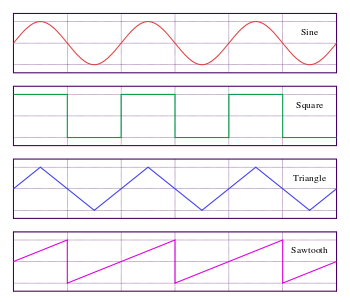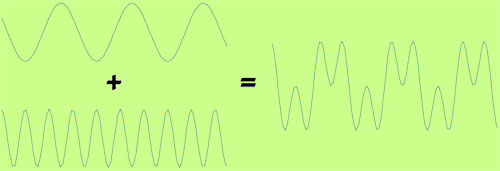We’ve shown you in the past how to create chiptune-style music both with a DAW program, and with old-school trackers.
There’s still another way to do it: via code. Particularly suitable for videogame music in particular, as you can have fine-grained control over the music that you autogenerate, giving it the ability to be dynamic.
Every programming language worth their name will have a basic sound synthesizing library, which will be more than what to need to make chiptune sounds.
The basics are these: you’ll need something called an oscillator, which is nothing more than a device (in our case it will be a software device, but a device nonetheless) capable of generating basic sound waves: sine, square, triangle and sawtooth.

Then’ you’ll combine several sound waves together to form your sound. This technique is known as additive synthesis, and it’s illustrated just below.

Once you have a timbre that you like, the synthesizing library should have functions to alter its frequency, which will result in different tones being produced (this is called FM, or frequency modulation, synthesis), and then you have all you need to make any melody.
There’s something that you have to take into account, and is that you should limit yourself a bit with the kind and number of waves that you’re using, to try to replicate the limitations of the hardware of old, and thus achieve convincing chiptune sounds. In this forum post the author recommends using nothing more than square, triangle and sawtooth waves (avoiding sine), and limiting yourself to four simultaneous instruments (as old sound cards didn’t come with many audio channels). Have in mind though that these are just guidelines, in practice you should experiment with everything and pick whatever you think sounds good and convincingly chiptuneish.
Synthesizing your own game music programatically has several important advantages: you wont waste any space storing your music assets (when your game is going on mobile phones this is an important aspect to consider!), and it allows for unlimited flexibility if your music is going to be dynamic. So we personally are keen in exploring this approach in a future game.